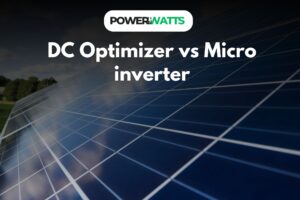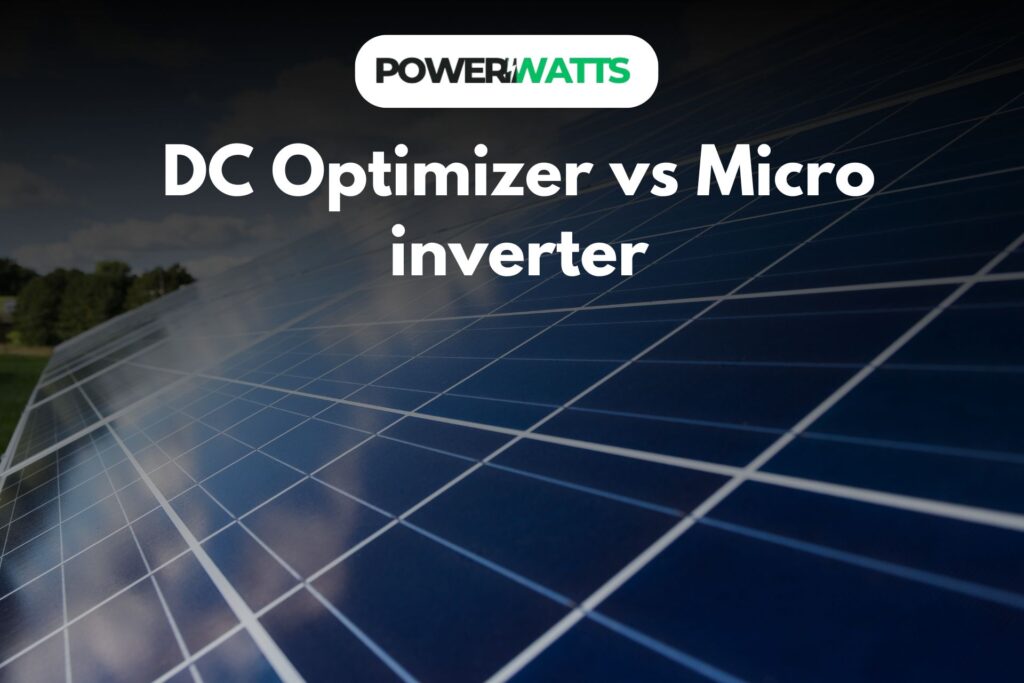The effective solar system consists of two technologies: DC optimizers vs micro inverter. Both play essential roles in improving the efficiency and effectiveness of solar energy systems, but they normally function differently and offer distinct advantages. The paper gives elaborate comparisons in features, benefits, and applications of DC optimizers and microinverters to help you select the best solution for your solar power system.
What Is a DC Optimizer?
DC optimizers are devices used to maximize the performance of one solar module in a PV system. They are commonly installed at the back of each panel; these devices function alongside a central inverter. The main task of the DC optimizer is to increase the energy output of a panel by counteracting such problems as shading, soiling, and panel mismatch.
How DC Optimizers Work
Panel-level Optimization: DC optimizers constantly monitor and correct the voltage and current for each solar panel, ensuring it operates at its maximum power point.
Inverter Communication: The optimizers provide performance data to the central string inverter that converts the DC power from the panels to AC and uses it in the house or feeds the grid.
Optimized Performance: DC optimizers can ensure the maximum possible power output for each individual panel, which minimizes the effect of shading, dirt, or damage reduction in efficiency, resulting in added energy production in the system.

What Are Microinverters?
Microinverters are small, independent inverters installed on the back of every solar panel in a PV system. These allow the treatment of the power independently from each panel, whereas central string inverters convert DC power from several panels into AC power. It provides much more flexibility and optimization at the level of the panel.
How Micro Inverters Work
Panel-Level Conversion: Each micro-inverter is connected to one solar panel, converting directly the DC power the panel produces into AC right at its origin.
System Flexibility: Because each panel functions independently, microinverters are able to allow the option of connecting panels with different orientations, sizes, and types in one system.
Performance Monitoring: Microinverters monitor performance detailed on a panel, thus precise monitoring and troubleshooting of the entire system.
DC Optimizer vs Micro inverter: Key Touchpoints
Performance and Efficiency
DC Optimizers: They optimize the output of each panel in the array to improve the efficiency of a string inverter-based system. These would address the losses that occur with partial shading or panel mismatch, but it is still a system highly centrally reliant upon an inverter for conversion from DC to AC.
Microinverters: They transform DC power to AC power at the panel level, hence achieving a potential overall system efficiency that is high. Since each panel operates individually, the performance or nonperformance of one does not affect the other during degradation.
System Design and Flexibility
DC Optimizers: They provide a compromise in terms of system design flexibility with a basic central string inverter. Though it can enhance system performance, the system will have to be run according to the central inverter’s specifications or requirements.
Microinverters: They allow a greater degree of design flexibility since panels can be installed with different angles and orientations. Also, it does support the integration of panels with various ratings of power, making them suitable for various installations.
Cost and Installation
DC Optimizers: In general, have a lower upfront cost because they utilize a central inverter. Installation is easier, but some additional components may be necessitated by the system, like communication hubs.
Microinverters: generally need a higher initial investment because of a huge number of inverters. Installation is similarly cumbersome, but for most people, the benefits of panel-level conversion and monitoring make all the hassle more than worthwhile.
Reliability and Maintenance
DC Optimizers: Rely on a central string inverter, which, in turn, maybe a single point of failure on the system. So, for instance, the entire system could possibly fail if the central inverter fails. The optimizers themselves are very reliable and virtually maintenance-free.
Microinverters: Enable redundancy, where each panel is independent of all the rest. Failure of one microinverter in a system leads to reduced performance in a single panel, but the rest of the operation will continue. This will lead to fewer overall maintenance issues cropping up.
DC Optimizers: Offer panel-level monitoring via the central inverter, allowing for insight into the performance coming from each panel. Troubleshooting can be easier since problems may be identified at the panel level.
Microinverters: Offer detailed monitoring for each panel individually, enabling exact identification of any issues that may arise. This can help make troubleshooting more efficient and result in overall system performance realisation.
Choosing Between DC Optimizers and Microinverters
It all boils down to system design, budget, and specific performance needs when it comes to choosing between DC optimizers and microinverters. Consider the following to make your choice:
Shading and Panel Orientation:
In the case of shading or other conditions where panel situations could be different, microinverters could afford better optimization in performance compared to a central inverter with DC optimizers.
Budget:
For the sake of affordability, DC optimizers with a central inverter remain viable options in the pool, with just a more expensive upfront cost as the price differentiation. Microinverters resemble a higher-end and sophisticated component that is flexible and adaptable.
System Size and Complexity:
Microinverters are ideal for complex systems where the layout may be intricate or may need to be different from one another. DC optimizers are suitable when the system is on a larger scale but with the same panels.

Conclusion
Both the DC optimizer and microinverter have sets of their own advantages and considerations in optimizing solar power systems. DC optimizers help to maximize string inverter systems by allowing panel optimization, while microinverters work on a panel-level conversion basis with flexibility, which can result in even higher overall efficiency. Knowing the differences between technologies is going to help you make an informed decision relative to your needs, system design, and budget. An appropriate solution provided for the efficiency of a solar energy system helps quite in effecting it to work more perfectly in ensuring that power is provided in a reliable and sustainable manner.
Get a Quote In case you are interested in integrating an inverter with a solar charger into your power system, do not hesitate to contact us today for your custom quote.


